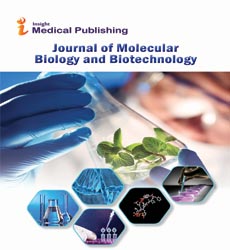A Commentary on Gene Therapy
Harry Tom*
Department of Molecular Biology, Harvard University, USA
- *Corresponding Author:
- Harry Tom
Department of Molecular Biology,
Harvard University,
USA,
E-mail: harry123tom@gmail.com
Received Date: September 1, 2021; Accepted Date: September 14, 2021; Published Date: September 21, 2021
Citation: Tom H (2021) A Commentary on Gene Therapy. J Mol Biol Biotech. Vol.6 No5: 006.
About the Study
Gene therapy is a branch of medicine that focuses on genetically altering cells to provide a therapeutic effect or heal disease by repairing or reconstructing damaged genetic material. Martin Cline made the first effort at changing human DNA in 1980, but the National Institutes of Health approved the first successful nuclear gene transfer in humans in May 1989. In a trial that began in September 1990, French Anderson performed the first therapeutic use of gene transfer as well as the first direct insertion of human DNA into the nuclear genome. It is expected to be capable of curing or treating numerous hereditary problems over time.
Over 2,900 clinical studies were undertaken between 1989 and December 2018, with more than half of them in phase I. Luxturna from Spark Therapeutics and Kymriah from Novartis were the first FDA-approved gene treatments to hit the market in 2017. Since then, medications including Novartis' Zolgensma and Alnylam's Patisiran, as well as gene therapy drugs from other businesses, have won FDA approval. The majority of these methods rely on adeno-associated viruses (AAVs) and lentiviruses to insert genes in vivo and ex vivo, respectively. Alnylam and Ionis Pharmaceuticals' ASO/siRNA techniques, for example, require non-viral delivery mechanisms and alternative mRNA.
Gene therapy is based on the idea of correcting a genetic disease at its source. If, for example, a mutation in a gene causes the creation of a malfunctioning protein in hereditary disease, gene therapy could be used to deliver a copy of the gene that does not include the detrimental mutation, resulting in the synthesis of a functional protein. This treatment method is known as gene replacement therapy, and it is used to treat inherited retinal illnesses. While gene replacement therapy is most commonly used to cure recessive disorders, new ways have been proposed that could be used to treat diseases with a dominant inheritance pattern. The introduction of CRISPR gene editing has opened up new avenues for its application and use in gene therapy, as it allows for the correction of a genetic problem rather than just replacing a gene. Medical difficulties, such as the elimination of latent human immunodeficiency virus (HIV) reservoirs and the correction of the sickle cell disease mutation, may have solutions as a restorative alternative later on.
Prosthetic quality treatment intends to empower cells of the body to assume control over capacities they physiologically don't complete. One model is the supposed vision reclamation quality treatment, that expects to reestablish vision in patients experiencing end-stage retinal diseases. In end-stage retinal illnesses, the photoreceptors, as the essential light touchy cells of the retina are irreversibly lost. By the method for prosthetic quality treatment light touchy proteins are conveyed into the excess cells of the retina, to deliver them light delicate and subsequently empower them to flag visual data towards the mind. Clinical preliminaries are continuous.
Not all medical procedures that introduce alterations to a patient's sequencetic makeup will be thought of gene medical aid. Bone marrow transplantation and organ transplants normally are found to introduce foreign polymer into patients. template RNA vaccines are not ordinarily thought of a sort of sequence medical aid, as they are doing not alter the patient's ordination. sequence medical aid is outlined by the preciseness of the procedure and therefore the intention of direct therapeutic impact.
Open Access Journals
- Aquaculture & Veterinary Science
- Chemistry & Chemical Sciences
- Clinical Sciences
- Engineering
- General Science
- Genetics & Molecular Biology
- Health Care & Nursing
- Immunology & Microbiology
- Materials Science
- Mathematics & Physics
- Medical Sciences
- Neurology & Psychiatry
- Oncology & Cancer Science
- Pharmaceutical Sciences
